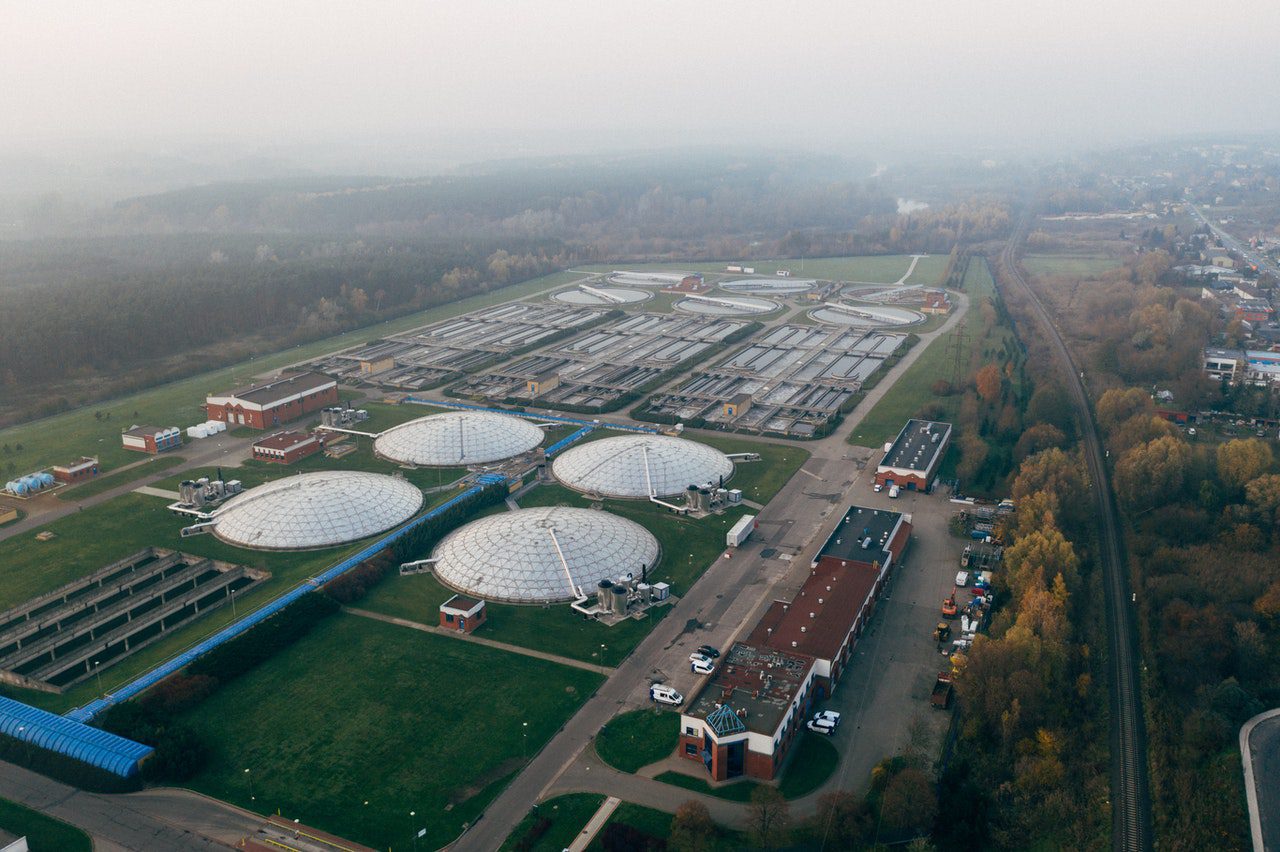01/11/2022 | Cyanide Wastewater Treatment | 8 MINUTE READ
Alternative Methods to Cyanide Destruction in Wastewater Treatment Plants

When you work at a wastewater treatment facility or similar industrial plant, wastewater treatment is essential towards making sure that the water that’s reused or sent into the environment is free from any harmful and unhealthy contaminants. One such contaminant that can sometimes be found in wastewater is cyanide, which is a chemical that can be deadly and exists in numerous forms. Regardless of the form it takes, cyanide is known to act rapidly.
If cyanide is in the form of a colorless gas, it can be either cyanogen chloride or hydrogen cyanide. In crystal form, this chemical can exist as potassium cyanide or sodium cyanide. A somewhat peculiar aspect of cyanide is that the chemical doesn’t always give off an odor. When it does, it will have a somewhat bitter almond smell. Even when this odor is present, however, not everyone will be able to smell it.
In industrial and manufacturing settings, cyanide is used for the creation of plastics, paper, and textiles. It is also placed in chemicals that are used to fully develop photographs. Cyanide gas can be used for the extermination of vermin and pests in buildings and ships. It’s also important to note that cyanide salts have the ability to aid in metal cleaning and electroplating processes.
When cyanide is used for metal plating processes, the wastewater that’s produced during the process will contain a certain amount of free cyanide. This cyanide will need to be fully destroyed before the water is discharged. In the majority of scenarios, it’s important that cyanide levels in wastewater are reduced to measurements of lower than 1PPM before discharge is able to take place. There are several techniques that can be used when attempting to get rid of cyanide concentrations in wastewater, which include everything from ozone to hydrogen peroxide.
The primary issue that occurs when you use cyanide is that free cyanide can be very dangerous, which means that any wastewater produced during an industrial process or application will need to be treated before the water can be reused or sent into the environment. In any substantial amounts, cyanide is extremely toxic. This chemical can be quickly absorbed by humans and animals via dust, vapor, or direct contact.
Along with free cyanide, any wastewater that contains measurable levels of strong acid dissociable or weak acid dissociable must be treated. The main reason that this water needs to be treated before being sent into publicly owned treatment facilities is that these facilities might not have the capabilities needed to eliminate the cyanide byproducts. This article offers a thorough look at the numerous methods and techniques that you can use to get rid of cyanide in a wastewater treatment facility.
Solutions to Cyanide Destruction

There are many different solutions available to you when you want to get rid of cyanide in wastewater, the primary of which is alkaline chlorination. This form of chlorination is highly affordable and has proven to be very effective at getting rid of any amount of cyanide in wastewater. The popularity of alkaline chlorination is due mainly to the affordable nature of the treatment.
Even though bleach produces similar results and is even more cost-effective than alkaline chlorination, it isn’t friendly to the environment. In fact, the Environmental Protection Agency has recently become concerned about the effects of bleach usage to the environment. While strong restrictions have yet to be placed on the use of bleach for cyanide destruction, the EPA has begun to encourage industries and manufacturers to look to other solutions. There are numerous sustainable options that are nearly as effective as alkaline chlorination without the downsides of bleach.
Other Methods To Destroy Cyanide

There are two additional methods that are commonly used in the destruction of cyanide, which include ozone oxidation and UV oxidation, both of which are highly effective. Ozone oxidation is a straightforward treatment process that’s able to reduce the level of contaminants in wastewater by effectively oxidizing the wastewater. Ozone is considered to be an oxidant, which essentially means that it will react with other contaminants and substances in the water before accepting their electrons.
Once ozone accepts the electrons of a contaminant, many different reactions can occur. The oxidizing of iron results in the formation of rust. If you decide to treat water with ozone, you will first need to use an ozone generator to create the amount of ozone that you require. Once ozone has been injected directly into the water, it will eliminate viruses, metals, bacteria, and cyanide.
The organic material that’s present in the membranes of these contaminants will be weakened and killed when oxidation takes place, which ends up eliminating the contaminants altogether. A top benefit of using ozone oxidation is that hardly any byproducts are added to the water during treatment.
As for UV disinfection, this type of cyanide destruction solution is able to expose the hydrogen peroxide in water, which results in hydroxyl radicals being produced. These radicals can oxidize any cyanide that remains in the water.
UV disinfection is another safe water treatment solution that eliminates microorganisms and other contaminants by using ultraviolet lamps to spread UV light waves over the water. At specific frequencies, these light waves can eliminate most of the contaminants found in wastewater. The primary advantages that industries and wastewater treatment facilities obtain when using UV disinfection to get rid of cyanide include:
- The process doesn’t use any chemicals
- Minimal usage of energy
- Quick and efficient process
- Able to get rid of nearly 100% of viruses and bacteria
- Affordable maintenance requirements
- Environmentally friendly
Three Methods to Destroy Cyanide That are Less Harmful to the Environment
There are three main methods that you can use to get rid of cyanide if you want to make sure that the technique is friendly to the environment. These methods include hydrogen peroxide, potassium permanganate, and thermal destruction. The method you decide to use mainly depends on which substance you have on hand and what efficacy you’re looking for. Despite how different these solutions are, they produce similar results.

Hydrogen Peroxide
If you want to use another treatment to get rid of cyanide instead of alkaline chlorination, hydrogen peroxide might provide you with the results you’re looking for. This solution is considered to be an effective alternative to chlorination because it avoids the toxic intermediates that chlorination results in.
Hydrogen peroxide is known to have less of an effect on the environment when compared to bleach. However, it’s important to understand that hydrogen peroxide won’t destroy cyanide completely, which poses a problem when you’re trying to get cyanide down to acceptable levels. Just like the other two alternative methods mentioned in this guide, hydrogen peroxide can be costly to implement on a large scale, which is why it’s recommended that you use this method when treating smaller volumes of wastewater. Copper is considered to be among the most effective catalysts for this technique.
Potassium Permanganate
Another alternative method of cyanide destruction that you can benefit from using is potassium permanganate, which is able to get rid of most heavy metals that are present in wastewater. Keep in mind that this substance should also be placed in an alkaline solution for the best results. When you apply potassium permanganate to contaminated wastewater, you should see results in next to no time. Within 10 minutes, it’s possible for cyanide to be almost completely eliminated.
While potassium permanganate doesn’t entirely destroy cyanide, it can get the chemical down to acceptable levels. The main benefit of using this solution is that toxic compounds like cyanogen chloride don’t form when potassium permanganate is added to the water. Ideal decomposition of cyanide typically occurs when the solution has a pH reading of 10 or higher.
Thermal Destruction
Likely the easiest technique you can use when you want to get rid of cyanide concentrations in wastewater is thermal destruction, which is done with the use of a heated pressure chamber. Once wastewater is placed into the heated pressure chamber, the cyanide should dissipate. Any remaining waste can be removed with other techniques.
Even though thermal destruction doesn’t eliminate every trace of cyanide, you should be able to release the wastewater into the environment in accordance with EPA guidelines and regulations after you perform thermal destruction. When you use thermal destruction to get rid of cyanide in wastewater, the entire process can be completed in around 20-40 minutes.
In the event that an industrial process at your facility results in the creation of cyanide byproducts, it’s essential that you take the steps needed to eliminate cyanide and make sure that the water is safe before it enters the environment. While alkaline chlorination is the most commonly used form of cyanide destruction, it can be harmful to the environment. As such, the alternative methods mentioned above should be considered if you want to make sure that additional treatment methods aren’t needed.
In all methods, monitoring water quality is critical but challenging, especially monitoring pH and ORP. A chemical resistant probe with proper reference design can ensure the process is relatively trouble free. See Sensorex Differential Sensors for great options.
Posted by Sensorex on January 11, 2022
Sensorex is a global leader in the design and manufacture of quality sensors for water quality and process applications. The company offers more than 2000 sensor packages for pH, ORP, conductivity, dissolved oxygen, free chlorine, chlorine dioxide, UV transmittance and other specialty measurements, as well as a full line of sensor accessories and transmitters. Its expert technical support engineers solve analytical sensor challenges with custom designs and off the shelf products.




